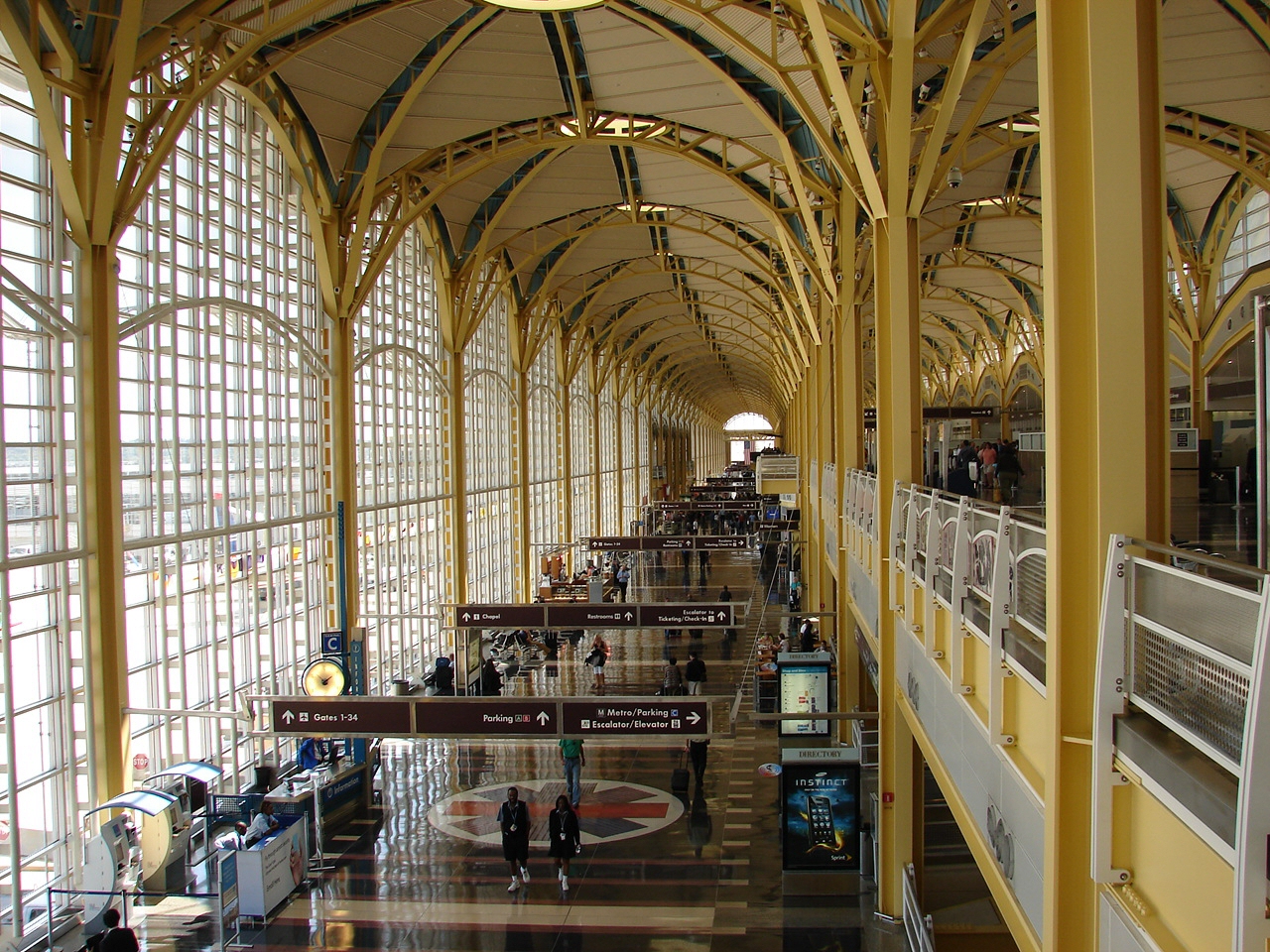
by Daniel J. Feil, FAIA Emeritus, Terminal Design Project Manager
The design scope of work (SOW) for the New Terminal at then-named Washington National Airport was developed in 1998, two years before the Americans with Disabilities Act (ADA) was passed. But the Uniform Federal Accessibility Standards (UFAS) had been in place for years and did apply, as federal funds were to be used. So the SOW stated that UFAS accessibility requirements had to be met. But the airport’s owner and operator, the Metropolitan Washington Airports Authority (MWAA) went much further, requiring universal access – both in public and service spaces, and in all tenant leased areas as well. In effect, all 1.2M square-feet were to be accessible. The requirement was fully embraced by the design architect, Cesar Pelli, and his studio, now Pelli Clarke Pelli.
Additionally, the terminal design would not be evaluated solely by using one of the then-standard “checklists.” Accessibility was required to be integrated into the design process from its start. For instance, there were decisions to provide at least two elevators if one was needed by demand counts, so that another would always be available if one was out of service — to serve all guests. Similarly, large rest rooms were designed as two identical halves, so that if one half needed servicing, the other with its accessible facilities would remain available to the public. By thinking about accessibility early on, unforeseen impacts to the project budget and schedule were curtailed.
The design was evaluated on how well it provided a superb user experience for all guests. The designers devised a concept whereby the number of required level-changes were minimized and distributed evenly among the various means of arrival. Paths of travel were kept as simple and straight as possible. Turns and switchbacks were minimized.
To keep similar passenger movements in all terminals, existing and new, the passenger circulation pattern in the 1941 terminal was re-employed in the New Terminal. Passengers entered, facing the airfield and seeing the aircraft. A U-turn revealed an array of ticket counters. Then passengers were directed to their gates. This simple and evident circulation reduced the number of directional signs. The sign typeface and letter heights were selected for readability at a distance, as airport guests are usually in a hurry.
The terminal is, at its most basic, an interface for passengers to leave their arrival modes of transportation and board an airplane. Guests arrive by automobile, Metro, taxis, and various shuttle buses. The aircraft used at the airport have a range of boarding doorsill heights. Metro’s farecard plaza proved to be the critical arrival elevation. There was a several foot difference between the two. The designers worked hard to bridge the elevation difference while creating travel paths that were as straight as possible, with no ramps at 5% or more, and with as few curb cuts as possible. Similarly, materials were selected to provide smooth floor surfaces for all wheeled items, travel roller bags and wheelchairs alike.
The New Terminal was, I believe, the first in the country to have companion care/family restrooms, and to have them liberally distributed throughout the terminal, in both the non-secure and secure areas. Far more companion care restrooms were provided than required by UFAS or later ADA. The intent was to have a fair distribution throughout the terminal, serving everyone well.
In 2003, Cesar Pelli, FAIA, was the recipient of the Paralyzed Veterans of America’s second Barrier-Free America Award. The Barrier-Free America Award was created to recognize exemplary accessible architectural design projects, and the people responsible for their success. With this annual award, the Paralyzed Veterans of America seeks to support exceptional accessible design while letting the design community know that accessible design and good design should not be considered mutually exclusive.
Airport terminals are in a state of almost constant change. But the ease of moving through the new terminal at “National” has remained a constant.
Takeaway Points:
- Universal accessibility should be the design standard.
- Accessibility should be an integral part of the design and budgeting process.
- ADA checklists are insufficient to ensure true accessibility.
- Alternative means of movement should be near each other and clearly visible to facilitate user decision-making.
- Design for accessibility should anticipate maintenance needs to ensure service is not temporarily lost.
- Construction must be carefully monitored to ensure accessibility measures are not unwittingly given up during that phase of project delivery.
Photo credit: Main Terminal Building at the Ronald Reagan Washington National Airport. Photo by Cory W. Watts.
